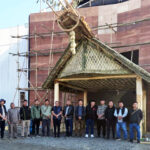Hilly areas are susceptible to a range of natural disasters, including flash floods, landslides, cloudbursts, mudslides, and rockslides. These occurrences pose significant threats to life and property, particularly during the monsoon season. To mitigate the risks associated with natural disasters in hilly regions, various techniques can be employed. These include strategic land use planning and zoning practices, wherein areas highly prone to natural disasters are identified and development is restricted accordingly. In some cases, it may be necessary to acquire properties in high-risk zones and relocate residents to safer locations. Public outreach initiatives play a vital role in educating residents about the potential risks of natural disasters and equipping them with knowledge on how to prepare effectively.
Furthermore, the implementation of early warning systems can be instrumental in notifying residents about imminent disasters, enabling them to seek shelter or evacuate in a timely manner. Adequate emergency response planning is crucial and should encompass comprehensive strategies for search and rescue operations, medical care provisions, and debris removal. By adopting these mitigation techniques, the risk of natural disasters in hilly areas can be substantially reduced, ultimately leading to the preservation of human lives.
Additional specific measures can be taken to mitigate the impact of natural disasters in hilly areas, particularly during the monsoon season. Reforestation initiatives can be undertaken, focusing on planting trees to stabilize slopes and mitigate the occurrence of landslides. Streambank stabilization methods involving the construction of structures can be employed to prevent erosion of stream banks. Moreover, drainage systems can be improved to enhance their effectiveness. To withstand the forces of landslides and floods, it is essential to construct buildings in hilly regions that adhere to safety standards.
Furthermore, raising awareness among residents about the risks associated with natural disasters and providing them with the necessary education on preparedness measures is paramount. Through the implementation of these measures, hilly areas can become safer during the monsoon season, reducing the potential loss of life and minimizing the damage caused by natural disasters.
The loss of two precious lives in Chumoukedima on Tuesday evening could have been averted if the authorities were proactive in ensuring safety infrastructure and if the implementing agency had paid heed to the Nagaland Pollution Control Board. Use of dynamite in road construction is a serious concern. The frequent landslides along Changtongya-Longleng road could possibly be attributed to use of dynamite if proper investigations were to be conducted. Human activity undoubtedly does leave an adverse impact on the environment. To recollect, the 2005 landslides in Mokokchung that claimed 14 lives or the flash floods in Mangkolemba last year are just two examples of the many ‘natural’ calamities that keep reminding us to be more mindful. The government, the authorities and agencies concerned, and the public in general must all work together to avoid loss of lives in natural disasters and to enhance preparedness.



